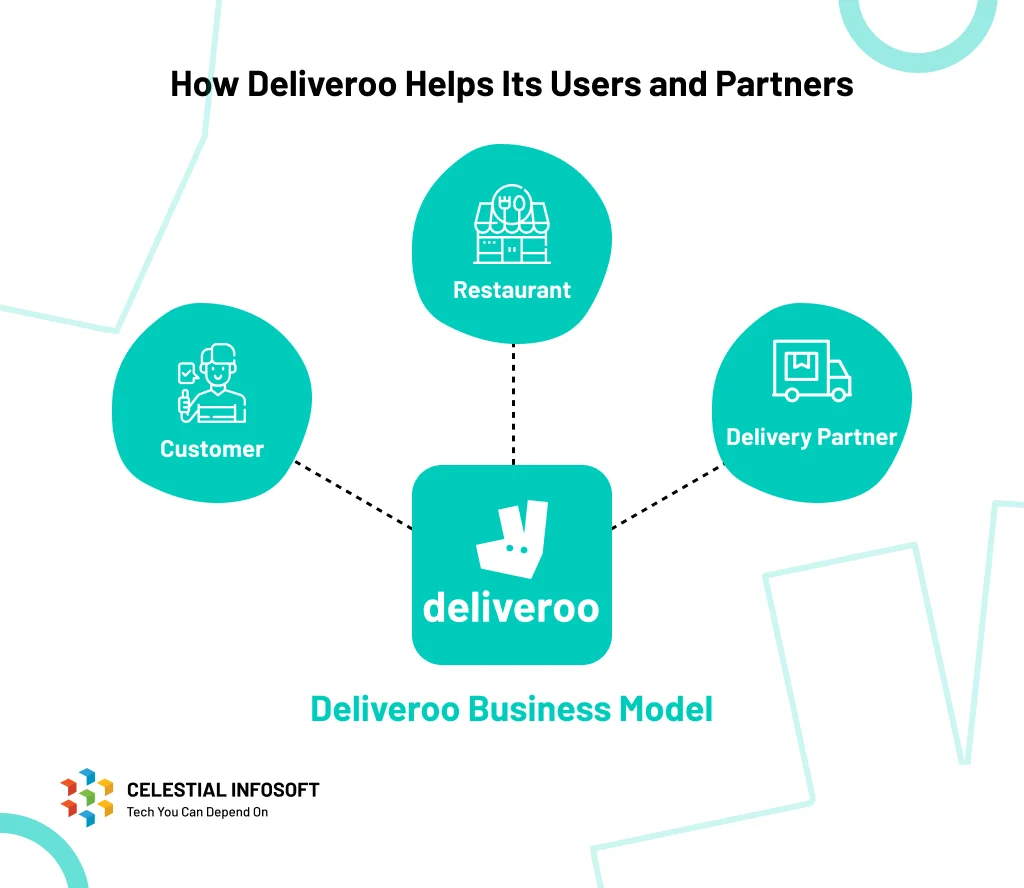
Table of Contents
Do you find ideas of how to operate a business, or elements of its structure and functioning, fascinating? Are you interested in obtaining products and services of different types with the least effort that you have to put in? If so, online meal delivery services might be what you need.
One major revolution that the food industry has undergone is the introduction of delivery right at the doorstep of various clients. Such a transition is informed by the following factors: Catch, ease, changes in the customer’s experience, and technological enhancement are on the frontlines of this revolution. If you have an interest in such dynamics and seek a good example of a service provider business, then you are in the right place.
In the current world, any new start-up that produces the right technological frameworks can be a market leader in the industry. Marketplaces for food delivery services are a great example of this. Meals may now be ordered on your smartphone and delivered to your house in under an hour. These are changing the food industry and making life easier for customers.
The market for meal delivery is just around the corner from touching the skies. They are either trying to mimic good business models, as in the case of Deliveroo or developing unique business models. Among them, Deliveroo has been quite prominent in delivering new solutions by integrating technology and unique business models into the online food delivery business.
Within the context of the meal delivery services market, which is already quite saturated, Deliveroo has found its unique position. Hence, based on technological advancement, efficiency in managing the business, and customers’ satisfaction, Crescent Security has provided a great reference point for the business. One of the primary value propositions for this company has been its highly efficient delivery and convenient attitude toward customers, both of which have played a role in Deliveroo’s rather successful expansion.
Deliveroo’s Business Model: The Multichain Service of Food and Grocery Delivery
Multichain has become the key driver of the food delivery industry, with Deliveroo as the pioneer. A customer can make his or her order via the website or a mobile application and can get delivery services from a variety of local restaurants by using the ability of Deliveroo. Deliveroo provides food delivery services by linking consumers with restaurants but does not operate its outlets, and delivery only adopts an aggregator model, which is beneficial to both large-end restaurants and the new upcoming companies with limited resources.
Relevant transactions are performed through the Deliveroo platform, where users can choose the desired meal, order it, and pay for it without leaving their houses. Such an aggregator approach enables the restaurants to post their available offers and coordinate orders for the food, along with negotiating the delivery process with Deliveroo. The delivery fees, restaurant commissions, and subscription fees can be coupled together to produce the revenues of the company, thereby providing enough revenues to help the company fund its activities and expansion.
Origin Story
The food delivery application, Deliveroo, has been operating since 2013 and was started by Will Shu and Greg Orlowski in London; it addresses restaurants to deliver meals within 32 minutes. Deliveroo currently serves almost 20 markets across the United Kingdom, France, Singapore, and other countries, with its main income coming from delivery fees and sign-up charges accompanied by services including Ghost Kitchens and fast-food grocery deliveries.
Deliveroo, one of the participants in the global food delivery market, which is estimated at $ 116 billion, provides an innovative solution that strengthens projected growth—the industry will reach $163 billion by 2025. This expansion must be supported significantly by the increasing incidence of smartphone users and the ease of buying foods online, thus revealing the market power of Deliveroo.
In addition to meal delivery, Deliveroo has gone faster with grocery delivery and virtual restaurants referred to as Deliveroo Editions. These services provide revolving customer requirements, and they deliver more value to the customers, thus establishing Deliveroo as a firm that operates within the food and grocery delivery industry. In this way, by paying regular attention to a company’s shifting needs and goals, Deliveroo has set the benchmark higher for reaching an audience and being convenient in the industry.
Deliveroo’s Business Model Structure

Deliveroo Business Model Benefits Partners and Customers
1. Hyper-Local Culinary Exploration:
Deliveroo is here to take the world’s greatest dining experiences and put them in your home, so you can sample everything from local restaurants to more exotic meals if you wish. This puts world cuisine just around the corner, enabling individuals to embark on a never-ending food trail.
2. Adaptive Logistics Mastery:
Using real-time data and artificial intelligence in delivery, the firm guarantees fast, effective deliveries within a certain timeframe of traffic congestion or a surge in the number of orders. This intelligent routing reduces the possibilities of delay and increases speeds and reliability, which in turn defines customers’ expectations of speed in delivery.
3. Empowering Small Businesses:
Being connected to a large number of restaurants, from the local ones that offer audiences intriguing new cuisine experiences to popular new food ventures, Deliveroo helps myriad small businesses increase the size of their consumer base and, hence, sales. These democratizing effects also go a long way toward enhancing the innovation, complexity, and vibrancy of our food systems.
4. Personalized Dining Experience:
Deliveroo utilizes complex computing methods by filtering out choices based on the client’s specifications, previous orders, and existing trends. Such a kind of nationalism whips up each consumption of food as a unique event, making the consumption of food more natural and pleasurable.
How Deliveroo Company Makes Money?
1. Delivery Fees:
‘Door-to-door’ delivery comes at a cost to the customer; customers pay for the services that are provided by Deliveroo in that manner. This fee depends on the location of the restaurant and the size of the order to be delivered. From the customer’s perspective, it is a predetermined method of gaining revenues from the principal service of food delivery and making them pay for the extra value.
2. Restaurant Commissions:
Earnings also comprise commissions from partnered restaurants, thus making up a noticeable proportion of Deliveroo’s income. Every time a customer orders food through the Deliveroo application, the restaurant gives a commission on the sale to Deliveroo. The commission charged under this model aids in the growth of restaurants’ popularity and the expansion of their audience base while also supporting Deliveroo’s financial viability.
3. Subscription Services:
Deliveroo has a subscription service, like Deliveroo Plus, that consists of privileges like free delivery on certain orders and vouchers. Such extras are subscribed to by clients at a certain price that is constant, thus generating constant revenue and making the client stick to the firm because of the added value and convenience.
4. Advertising Fees:
For the restaurants’ benefit, Deliveroo offers the option of paid promotion for the restaurants’ listings, including highlighted positions in the app and website. These are advertisement services from restaurants that wish to appear or be recommended to those who use search engines and whose orders will increase Deliveroo revenues.
5. Delivery Partner Fees:
Business owners who operate under the Deliveroo platform are other sources of the company’s income. They can also be required to pay service fees for using Deliveroo’s technology and resource facilitation, such as the application and resources utilized in the control of deliveries. This model means that the delivery partners have the required infrastructure, while at the same time, Deliveroo has an additional layer of revenue.
Key Partners of Deliveroo and How it Helps?

Deliveroo’s model drives growth for restaurants and delivery partners. It boosts restaurant visibility, provides valuable data insights, and offers flexible working hours, essential technology, safety measures, and performance-based incentives for delivery partners. This support ensures mutual success within Deliveroo’s ecosystem. also helps its restaurant partners with improving visibility with marketing and promotion on behalf of partners.
Here we will discuss in detail how Deliveroo helps its restaurant partners and delivery partners to grow consistently and boost the economy as well.
How Deliveroo Helps Its Partners Restaurants with Its Business Model
1. Increased visibility and reach:
Therefore, Deliveroo connects restaurants with more people, allowing them to discover new eateries and sample their food. The platform facilitates the growth of restaurant partners at a minimal cost by leveraging its ample resources to reach a broad audience. This heightened visibility supports local partners in growing their presence with Deliveroo.
2. Data-Driven Insights:
Restaurants also benefit from the analysis tools from Deliveroo, which provide information regarding consumers’ habits, orders, and KPIs. Such data is useful in promoting adaptive menus, pricing, and profit-making promotional techniques among restaurants.
3. Marketing and Promotions:
Deliveroo has the option of promotional tools like featured options and special offers, which help restaurants increase their target audience and gain more consumers. They help restaurant marketers realize their goal of marketing the outlets in highly competitive markets.
4. Streamlined Operations:
Due to the integration of the ordering system and a proper approach to delivery management, the work with online orders does not cause difficulties at Deliveroo. This dimension decreases operational difficulties and provides restaurants with opportunities to serve their main purpose.
How Deliveroo Supports Its Delivery Partners
1. Flexible work opportunities:
The delivery partners are free to set their working schedule and be independent of the number of hours worked. This independence is useful because they can protect their time while addressing their work responsibilities.
2. Access to Technology and Tools:
First of all, by using technology, Deliveroo equips the delivery partners with an easy-to-use app and efficient tools for delivery. This involves work facilities such as navigation, order tracking, and real-time update features that ease their work.
3. Support and Safety Measures:
Deliveroo also has help channels for the delivery partners and has policy measures in place, including insurance and health measures, to ensure that delivery partners work in relative safety.
4. Incentives and Bonuses:
As for the motivation and reward for its performers, Deliveroo provides different bonuses and sweeteners depending on the number of orders and satisfaction level. These rewards assist partners in earning more and remaining active on the platform.
What Key Insights Can We Gain from Deliveroo’s Business Model Success?
1. Leverage technology for efficiency:
The process of order acquisition and performance by Deliveroo, side by side with the aspects that enable order acquisition, real-time processing, or following the most efficient delivery routes, are examples of the need to combine advanced technological solutions to increase results and consumers’ value. The various activities can be addressed by entrepreneurs by adopting technology that can help automate processes and offer some other important data.
2. Build strong partnerships:
Thus, by building strong partnerships with restaurants and delivery partners, Deliveroo contributes to the beneficial environment that needs all its members. The management of the firms should gravitate towards building strong business relationships to gain market share, enhance service delivery, and achieve common benefits.
3. Focus on the customer experience:
Deliveroo has placed a significant focus on the customer, making it easy for them to not only place orders but also complete the process as smoothly and efficiently as possible. Additionally, it concerns the continuous efforts of entrepreneurs to make users’ experiences convenient, personalized, and supported, so that customer engagement is guaranteed.
4. Adapt to market demands:
Further, Deliveroo demonstrated that its business depends on flexibility and the ability to develop new concepts and change the approach based on market and customer needs. The best strategies for entrepreneurs would be to be lean and adaptive, constantly gather feedback from the market, and be prepared to make changes as needed.
Bonus Insight
As you understand how Deliveroo operates, it’s clear that online food delivery solutions are facing growing competition. With increasing demand, more competitors are entering the market to offer enhanced online food delivery options. Regardless of the approach, the food delivery industry is set for significant expansion in the coming years.
While some may aim to replicate Deliveroo’s business model, others will innovate with unique approaches. Given that current businesses cannot fully meet consumer demand, this presents a prime opportunity to get involved.
If you’re considering a SaaS-based Deliveroo food delivery app solution, Deonde offers top-tier food delivery software tailored to drive results and specifically designed for your food business.

Frequently Asked Questions ( FAQ )
From the restaurant partners, how exactly does Deliveroo make its revenues?
Its business model is to receive income from restaurants in the form of commission fees for all orders made via the app. This is usually a proportion of the sale that gives restaurants the benefit of improving their exposure and, therefore, their client base, while on the other side, Deliveroo gets its steady stream of income.
Regarding the delivery service of food, what are the major sources of income for Deliveroo?
Thus, the major streams of revenue for Deliveroo are fees from customers’ deliveries, commissions from partners (restaurants, subscription fees for additional services such as Deliveroo Plus, fees for advertisements, as well as service charges from delivery personnel.
How does restaurant delivery service company Deliveroo benefit from its subscription service?
Services such as Deliveroo Plus are subscription-based revenue models, which entail reoccurring fees harvested from customers. Some of these include free delivery on all the qualified orders and other promotions that directly justify a regular cash inflow into the company’s account and, therefore, subscribers.


such a great article
impressive
Thank you for expressing your interest in our article.
Check-out our other Blogs Also,
We Post Quality Content.
Thanks for sharing. I read many of your blog posts, cool, your blog is very good.
Thank you so much for your kind words and for being a dedicated reader of our blog! We’re thrilled to hear that you find our content valuable and enjoyable. If you have any specific questions or need further clarification on any of our articles, please don’t hesitate to reach out. We’re always here to help and provide you with the information you need.
Thank you for your sharing. I am worried that I lack creative ideas. It is your article that makes me full of hope. Thank you. But, I have a question, can you help me?
please tell us
Your point of view caught my eye and was very interesting. Thanks. I have a question for you.
thank you
you can ask
Thanks for sharing. I read many of your blog posts, cool, your blog is very good.
thank you
we have more content and we will upload blog in regular basis.
keep in touch.
The point of view of your article has taught me a lot, and I already know how to improve the paper on gate.oi, thank you.
Can you be more specific about the content of your article? After reading it, I still have some doubts. Hope you can help me.
Thanks for sharing. I read many of your blog posts, cool, your blog is very good.
Your article helped me a lot, is there any more related content? Thanks!
Thanks for sharing. I read many of your blog posts, cool, your blog is very good.